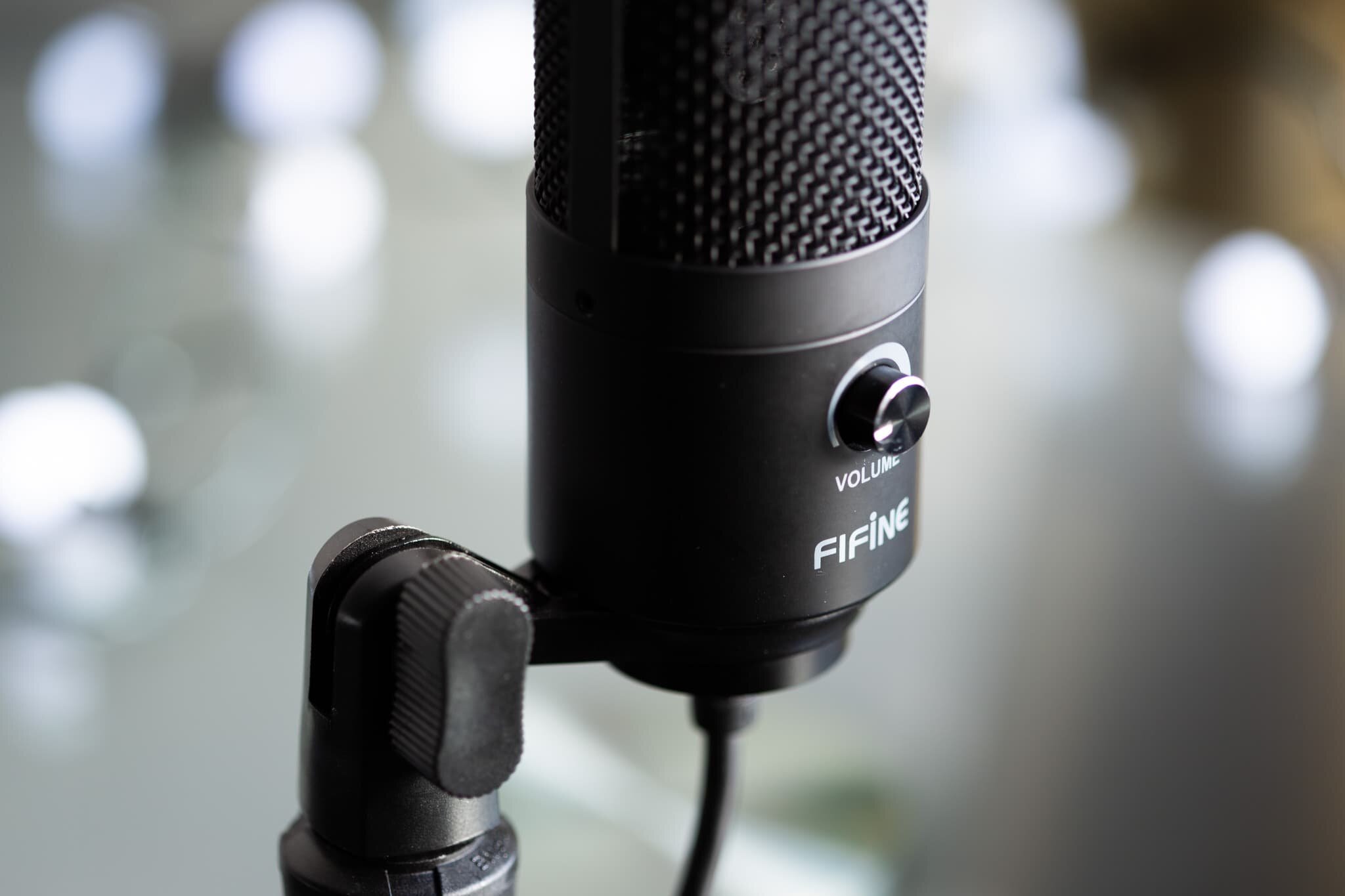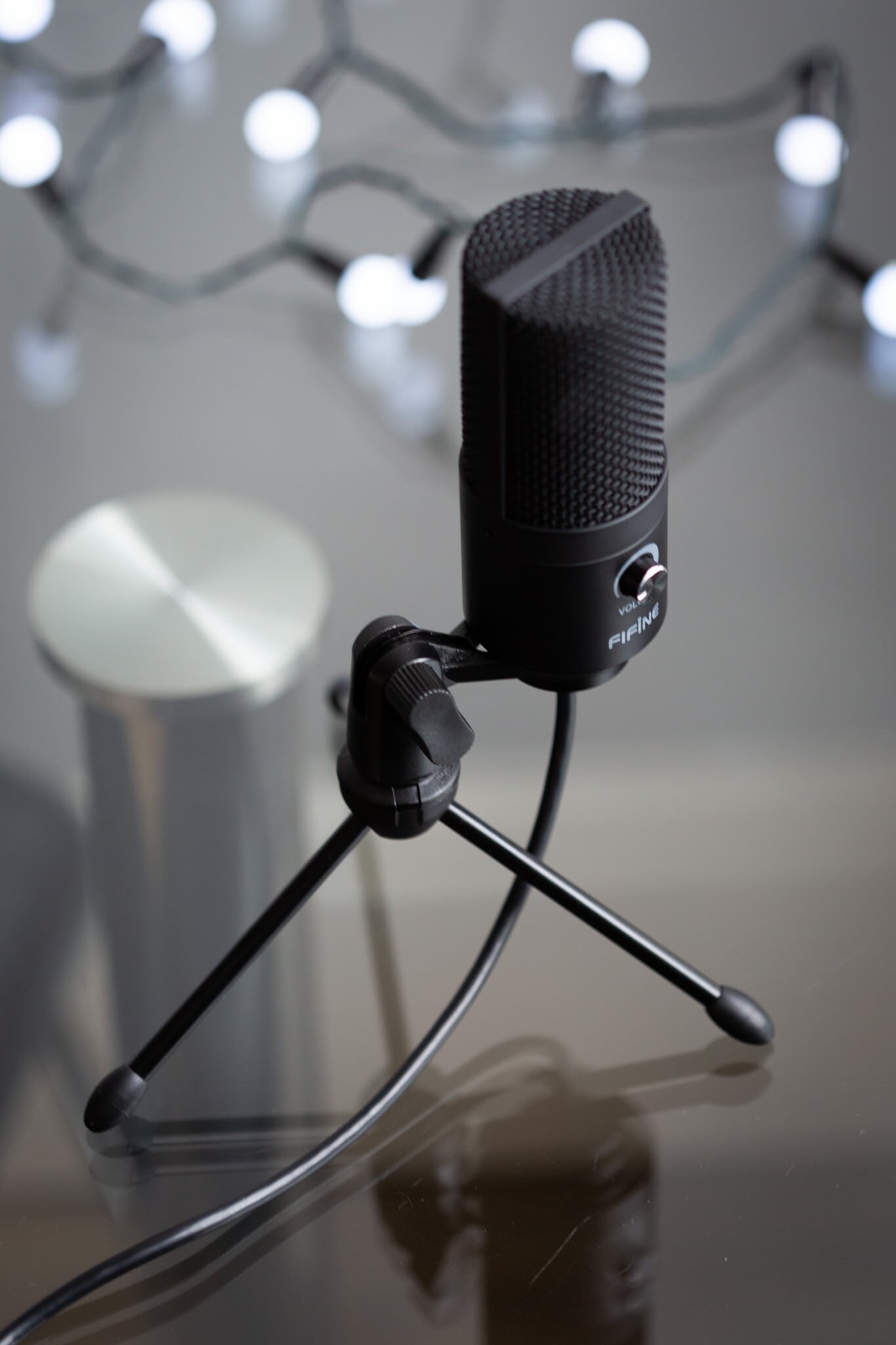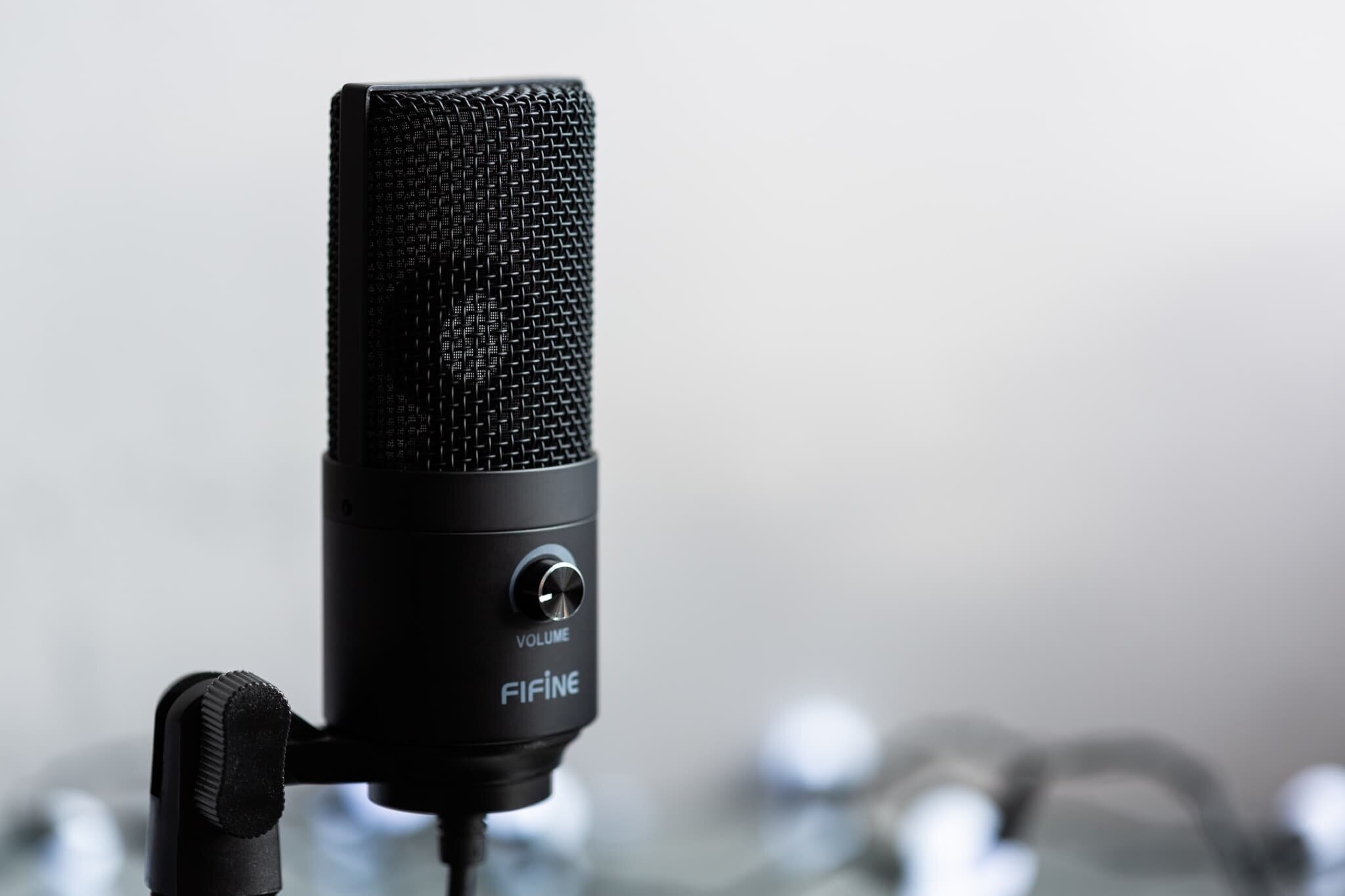Fifine K669 Microphone - Worth a Listen?
Today I'm discussing the Fifine K669 USB condenser microphone, a podcaster/studio style mic designed with value and simplicity in mind. Strictly speaking, I opted for the K669B because I like all my equipment to be black and dull, but the standard K669 is rose red which will undoubtedly appeal to many.A decent microphone is not necessarily expensive. The mic in your mobile phone, a component worth no more than a few dollars, can sound very good if used correctly. The microphones you see in a studio might cost thirty times more than the Fifine K669, but you can be sure they do not sound thirty times better. Diminishing returns soon kicks in, and you start paying for advanced connectivity, a few extra features and top-notch construction. Oh, don't forget the extra chunk on top for the prestige of having a Neumann or a Sennheiser badge. There's no question that these are superior mics for all those reasons and more, but when it comes to real value, how does the K669 fair?
K669 or K669B?
They’re exactly the same mic. One is pink’ish and one is black (as in this review).
SPECIFICATIONS
Cable Length (cm): 1.8m
Connection: USB 2.0
Frequency Range: 20Hz -20KHz
Use: PC or Mac with USB
Sensitivity Range: -34dB
Polar Pattern: Cardioid
Microphone Type: Condenser
THE REVIEW
Let's look at some of the important considerations when buying and testing a microphone. I'll give the K669 a score out of 10 and then average these scores up to provide an overall rating for this mic.
1. SOUND QUALITY
While the microphone can struggle with high sound levels (the sensitivity of -34dB suggests that this is not a mic designed for a kick drum and the electronics are not up to it!) if you use the K669 from roughly 10-15cm and get your audio levels set correctly, the audio is rich, clear and crisp. I expected it to sound boxy, but it doesn't. It can easily blow away microphones that are three times the price. It's perfect for YouTube, live streaming, Skype, Twitch and even gaming (though a headset would be a more logical choice here). It might be a little bright for some and it sounds like there's some EQ onboard to push up the top-end a bit and make it sound a little more 'premium' than it is. This is good if you like the sound (which I do) as it's one less job to do when editing. On the other hand, more expensive mics that I use tend to sound duller out of the box giving you the flexibility to EQ to taste further down the line. That's me being critical though. This brighter response is perfect for its intended uses. SCORE - 8/10
2. BUILD QUALITY
Trust me, you will be impressed. It has a weighty metal body, a good quality metal mesh, a sturdy cable and volume control. The tripod it comes with is a plastic afterthought. It works great but feels like a poor quality companion when paired with the mic. SCORE - 7/10
3. HANDLING NOISE
The sturdy construction of the mic makes for extremely low handling noise. You can handle the mic and even pass it around during use with minimal microphonics, rumble or annoying clatter. It makes using it without a shock mount quite possible. SCORE - 9/10
4. KEYBOARD NOISE
This one is up to you because it depends on how you mount the mic. However, let's assume that many people will use the supplied stand and just plonk it on their desk. The question is how well does the supplied stand acoustically decouple the mic from the vibrations caused by you typing on your keyboard? I connected the mic to my work laptop and used it on a couple of conference calls on Skype for Business. It did a fantastic job with much less tapping picked up than the built-in mic on the laptop. Admittedly, this is using chiclet keys. You may find a mechanical gaming keyboard more of a challenge. SCORE - 8/10
The Fifine K669B with Stand
The stand does the job but, compared to the mic, it’s a rather weak and cheap addition.
5. PRE-AMPS & NOISE
As the K669 connects via USB, the pre-amps are in the mic. It's here where the analogue to digital conversion takes place. At this price point, it's no surprise that you can very quickly hit the limits of the electronics in this device. To get a good level, I found that a mic setting of 70 in Windows together with the mic volume set on full worked well. These settings gave a noise floor of -55dB or lower which is perfectly acceptable. However, that's where the good news ends. Regardless of the mic volume level or the software level in Windows or MacOS, the K669 will hard limit, clip and distort once the input get above a certain level. For me, that level is speaking loudly and little closer to the mic. If you turn the volume down, the final output might only be -10dB but the clipping and distortion has already occurred. Check out the video for a demonstration of this as it's easier to understand when you hear it yourself. This isn't a deal-breaker though as you just need to use it properly and you'll get great vocals but it does possibly limit the number of ways that you could use this mic. SCORE - 5/10
6. MOBILE PHONE NOISE
This is more of a problem from 10 years ago but I thought I'd check it as this is a budget mic. I couldn't hear any noise whatsoever when using a phone right next to the mic. SCORE - 10/10
7. SETUP
I've used this on both Windows 10 and MacOS, and installation could not be more straightforward. Plug the mic in, and it's ready to use within 10 seconds as a new audio device. SCORE 10/10
8. CONNECTIVITY
It's USB 2.0, so it will connect to virtually anything one way or another. The 1.8m cable is rugged and doesn't feel like it's going to snap anytime soon. It is, however, hardwired into the microphone. If the wire breaks or the USB plug is damaged, you will have to replace the whole unit. At £30 that might not seem like the most significant problem, but it still feels incredibly wasteful. While everything is working though, it does mean that the connectivity into the mic is reliable and straightforward. It would probably be more prone to failure if Fifine integrated a poor quality connector to allow a removable cable. A professional spec plug and socket would possibly push the cost up 20%. Manufacturing a device such as this is all about trimming the fat and, with that in mind, I think they've made the right choice here. SCORE 7/10
9. SOFTWARE
This is plug-and-play. There are no options and there is no software. The mic becomes a USB sound device and that's it. Be aware that this sound device is locked to 48KHz 16-bit. If you need a different sample rate, you will need to record at 48KHz and convert somewhere else. For most video use, this will not be a problem. SCORE - 8/10
CONCLUSION
At £30, this microphone is outstanding value for money. It's not perfect, but if you're just getting started in the world of recording your voice, you could do a lot worse. The overall package is convenient, incredibly easy to install on both Mac and PC and substantial enough to be chucked in a bag and used on the move. The electronics are what you would expect for £30, but that's more of an observation than a criticism. It produces vastly better results than any laptop based mic or webcam mic as well as most gaming headsets I have heard.At this price, it's unlikely to break the bank. I was both surprised and impressed and I don't think you'll be disappointed.



